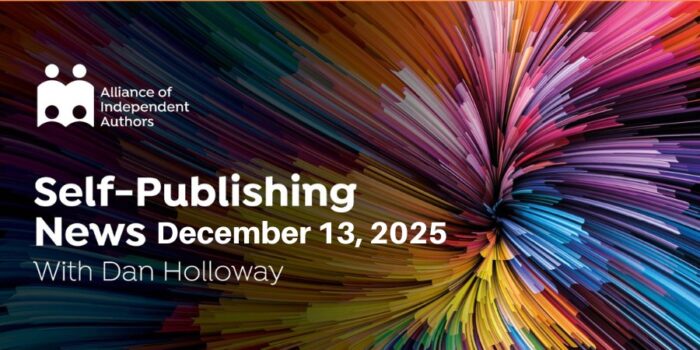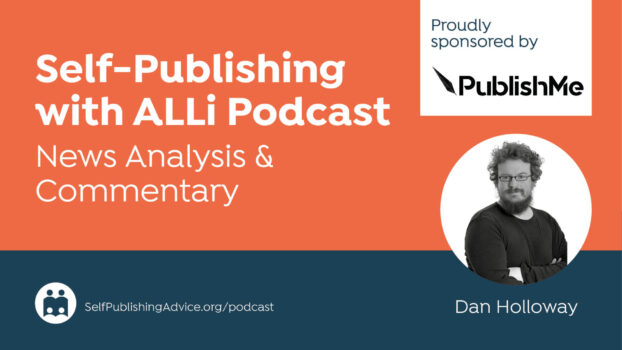Setting the right price for a book is one of the biggest challenges for self-published authors. Many look at what others in their genre are charging and try to match those prices, but this approach can undervalue their work. Some authors price low out of fear that readers won’t pay more, while others feel pressure to keep their books cheap in a market where free and heavily discounted e-books are common. But as we’ll explore in this post, much more than price goes into a reader’s decision to buy a book.
Experts say pricing is about more than market trends. Readers perceive value in different ways—some are drawn to bargains, while others associate higher prices with quality. As production and marketing costs continue to rise, some authors argue that the industry’s pricing expectations need to change. The challenge is finding a strategy that balances visibility, profitability, and long-term sustainability without devaluing the work itself.
The Pricing Question

“What if your pricing wasn't about the cost of your book, but about the experience you were giving readers?” said Joe Solari.
Many authors focus on setting the “right” price for their book when they should be asking a different question: “Who isn’t reading my book yet, and why?” On the Publishing for Profit stream of the Self-Publishing with ALLi podcast, consultant Joe Solari said pricing should be viewed as a tool for reaching the right audience, not just a way to compete with other books.
To illustrate his point, Solari compared book pricing to the rise of Starbucks.
“Now, I remember back in the 1990s, I was walking to college, and I saw for the first time a Starbucks, and if you told somebody back then that they would be willing to pay $5 for a latte, they would laugh,” he said. “Coffee was a commodity. It was quick and cheap, and you went into your local diner or a gas station or a convenience store, but then Starbucks came along and changed the game.”
He argued that books work the same way.
“Too many authors think of their books as commodities, just like coffee used to be,” he said. “But what if you could position your work as something much more? What if your pricing wasn't about the cost of your book, but about the experience you were giving readers?”
Some authors say pricing no longer reflects the actual value of books.
“Unfortunately, books are a commodity product where the market determines the cost, not the producer or the cost of production,” said author Alexander Lane.
“The main reasons for this are that there are too many authors in general, too many willing to give their content away, widespread piracy, and subscription services which give the illusion of free content. A negative feedback effect of the commodity market is that authors are driven to produce too many books because each one delivers very little profit.”
Others say authors who rely too much on platform pricing models are putting their earnings at risk.

“We need to control our own digital footprint at strategic points,” said John A. Mulhall.
“As Elon Musk has proved on X for digital business, one change to an algorithmic routine can ruin your income after time and investment in generating it,” said author John A. Mulhall. “Same applies to all digital platforms. We need to control our own digital footprint at strategic points, not be vulnerable to ruin for crossing some grey area ethical change in a platform’s backend.”
Solari said authors need to shift their thinking about pricing.
“The key is developing a deep understanding of your readers' needs, expectations, and behaviors,” he said. “Different readers value different things, and pricing is your lever to attract the right audience.”
The Psychology of Pricing
Solari argues that many authors undervalue their books because they assume readers won’t pay more, even when data suggests otherwise. “In a world where millions of free books are available, people still pay for the stories they want, and they’ll pay full price,” he said. “They may even buy it more than once.”
He believes too many authors focus on price instead of the experience their book provides. “You're not just selling words on a page,” he said. “You're selling an emotional experience that your story delivers—whether it’s escapism, inspiration, entertainment, or a little spiciness.” He encourages authors to shift their mindset and recognize that pricing higher doesn’t necessarily mean losing readers—it can signal quality and value to the right audience.
Despite this, many authors hesitate to raise their prices.
“I feel my work is worth more, and I've had business people tell me my margins are too low,” said Trina Brooks.
She charges $18 for her paperbacks, slightly below the $20 many indies in her genre charge.
“I've never had someone say $18 is too much, and I am not making much profit, so I definitely undervalue myself.”
Pricing low can also create a trap where further discounting becomes impossible.

“The problem is, if you have already set a low entry price, how can you earn any money when you have to drop the price even further to attract readers?” said Birgit Constant
“Whatever price you set, books on the English-speaking markets are generally priced much lower, both e-books and print,” said Birgit Constant. “One can only hope that the number of sales can make up for the lower price. But for that, you need visibility, and the only way to obtain this seems to be to drop the prices frequently and by a lot. The problem is, if you have already set a low entry price, how can you earn any money when you have to drop the price even further to attract readers?”
Lesley Thomas believes it takes courage to push against pricing expectations. She priced her children’s paperback at £9.99, even though many comparable books were priced at £7–8.99.
“Most are beautiful books, and, in my opinion, being sold too cheap,” she said. “Even some of my fellow SCBWI members thought I was pricing too high, but I think the market needs to sustain an increase, and it takes brave indie authors (and publishers) to make that decision, and hopefully, an impact.”
Her experience showed that readers were willing to pay.
“I have sold more than 700 copies since my book’s launch in June last year, mainly by direct sales. People have been more than willing to pay £9.99 for my book, with my in-person author visits handing me £10 notes and waving the penny change!”
Lane says in-person sales provide a rare opportunity to break the “commodity” mindset. “The exceptions to this seem to be in-person sales, where consumers must acknowledge the producer as a human being with needs that mirror their own, and limited special editions (even if it’s just a signed copy) which sit outside the commodity market,” he said. This personal connection, he argues, reminds readers that authors are real people, not just content creators in an endless digital marketplace.
Solari believes authors need to rethink how they perceive their own value. “Be like Starbucks,” he said. “Understand your audience, focus on their experience, and price your work in a way that reflects the value you bring to their lives.”
The Practical Side of Pricing
Some authors say that pricing doesn’t reflect the rising costs of producing a book. “It appears book prices do not increase with inflation either,” said Thomas. “The production costs still increase, and so do the marketing costs, leaving the author with less profit.” She believes the industry, both traditional and indie, needs to rethink how books are priced, particularly as other costs continue to rise.
Pricing expectations also vary by market. “Compared to the German market, in particular Tolino, whatever price you set, books on the English-speaking markets are generally priced much lower, both e-books and print,” said Constant. She said that frequent and deep discounting seems to be the only way to gain visibility, but this creates a pricing trap.
“If you have already set a low entry price, how can you earn any money when you have to drop the price even further to attract readers?”
Others argue that reader expectations have been shaped by years of ultra-low pricing. “Consumers of ebooks are now conditioned to expect titles for free, or at most pay 0.99 for new books, which is a shame, because it makes it difficult for authors to ask what they feel their work is worth,” said Paul Carson. He has largely avoided deep discounting, pricing his ebooks at $4.99 and his paperbacks at $9.99.
“Do I sell a lot? No, I don’t, but my writing is not my main source of income. I’m just not buying into freebie culture.”
Effective Pricing Strategies

“Once you have a faithful band of people who will support your books, then you really have the ability to set your price,” said Terry Lister.
Some authors take a flexible approach, adjusting their prices over time based on demand. “While I think it is always good to have the right price, I also believe there is no right price,” said Terry Lister.
He starts by looking at similar books, but then evaluates whether his price should go higher or lower based on actual sales.
“Ultimately, I believe it comes down to building a market for your book. Once you have a faithful band of people who will support your books, then you really have the ability to set your price.”
Others look at industry data to guide their pricing decisions. “Assuming you have a decent reputation and the capacity to market the books well with ads, one of the safest and most reliable pricing strategies is to mirror Amazon imprints in their pricing,” said Kevin McLaughlin. “Because Amazon imprints have access to more reader data than any other publisher on Earth, their prices are based on better data than anyone else.”
However, he noted that this approach works best for authors who have an advertising budget and a strong understanding of marketing. For those without that foundation, he recommended staying in the $2.99 to $3.99 range. “If you’re starting from a position of experience and marketing acumen, then $5.99 is a much stronger price point for most genres.”
Strategies for Confident Pricing
Authors who want to take control of their pricing need to evaluate whether their strategy is based on value or fear. Solari argues that many authors assume readers won’t pay higher prices, even when data suggests otherwise. Instead of defaulting to low prices, he encourages authors to consider what their audience values and whether their pricing reflects that.
Some authors have found success by testing new approaches beyond traditional discounting. Options like premium editions, bundling, and direct sales can allow authors to charge more while offering added value. Lister said that once an author has built a loyal readership, they gain more flexibility in setting prices. Thomas’s experience suggests that pricing higher than industry averages doesn’t necessarily deter buyers if the book delivers what readers want.
Understanding who the book is for is another key factor. Some readers are deal-hunters who only buy at deep discounts, while others are willing to pay full price, particularly for books from authors they trust. McLaughlin noted that authors who market aggressively and understand pricing data can aim for higher price points, while those without a strong promotional strategy may need to price lower at first.
Solari believes that pricing is as much about positioning as it is about numbers. “You're not just selling words on a page,” he said. “You're selling an emotional experience that your story delivers.” His takeaway: Authors should think like Starbucks—focus on the experience, not just the price.
In the end, pricing decisions require a balance between sustainability and reader expectations. Authors who undervalue their work risk making it harder to sustain a career, while those who price strategically can build a profitable and loyal readership.
Thoughts or further questions on this post or any self-publishing issue?
 If you’re an ALLi member, head over to the SelfPubConnect forum for support from our experienced community of indie authors, advisors, and our own ALLi team. Simply create an account (if you haven’t already) to request to join the forum and get going.
If you’re an ALLi member, head over to the SelfPubConnect forum for support from our experienced community of indie authors, advisors, and our own ALLi team. Simply create an account (if you haven’t already) to request to join the forum and get going.
Non-members looking for more information can search our extensive archive of blog posts and podcast episodes packed with tips and advice at ALLi's Self-Publishing Advice Center.




